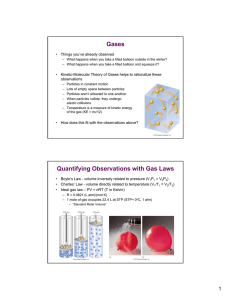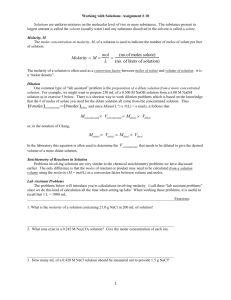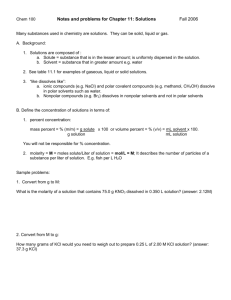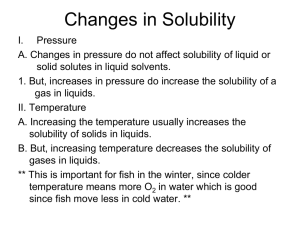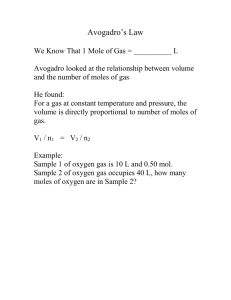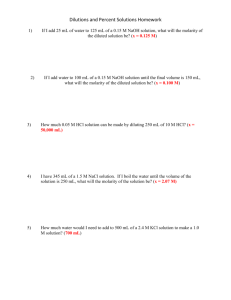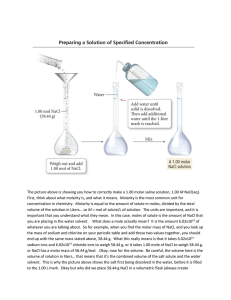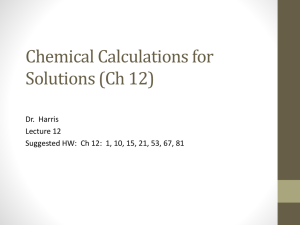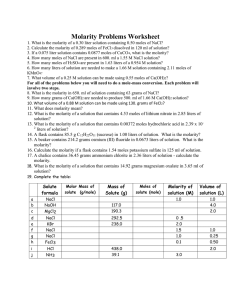UNIT 2: REVIEW TIER 4
advertisement
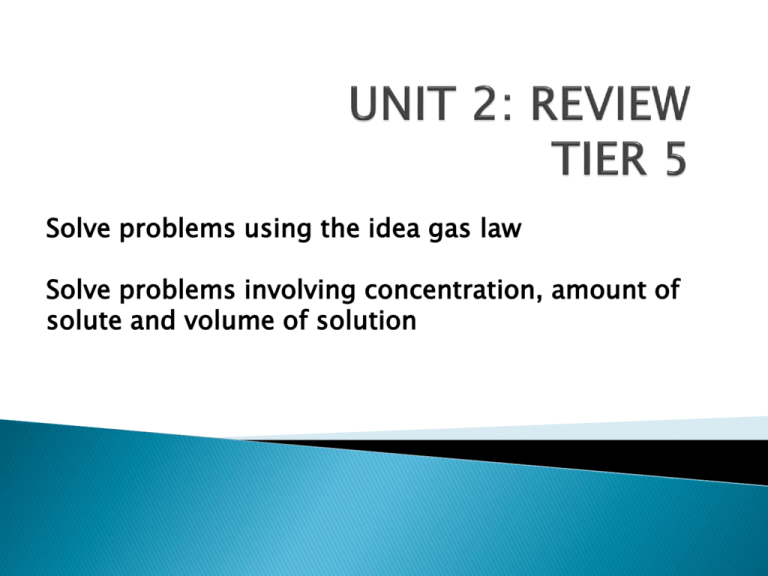
Solve problems using the idea gas law Solve problems involving concentration, amount of solute and volume of solution The Ideal Gas Law You have learned about equations describing the relationships between two or three of the four variables—pressure, volume, temperature, and moles—needed to describe a gas sample at a time. All of the gas laws you have learned thus far can be combined into a single equation, the ideal gas law: the mathematical relationship among pressure, volume, temperature, and number of moles of a gas. It is stated as shown below, where R is a constant: PV = nRT The Ideal Gas Law, continued The Ideal Gas Constant In the equation representing the ideal gas law, the constant R is known as the ideal gas constant. Its value depends on the units chosen for pressure, volume, and temperature in the rest of the equation. Measured values of P, V, T, and n for a gas at near-ideal conditions can be used to calculate R: The Ideal Gas Law, continued The Ideal Gas Constant, continued The calculated value of R is usually rounded to 0.0821 (L•atm)/(mol•K). Use this value in ideal gas law calculations when the volume is in liters, the pressure is in atmospheres, and the temperature is in kelvins. The ideal gas law can be applied to determine the existing conditions of a gas sample when three of the four values, P, V, T, and n, are known. Be sure to match the units of the known quantities and the units of R. Numerical Values of the Gas Constant Sample Problem I What is the pressure in atmospheres exerted by a 0.500 mol sample of nitrogen gas in a 10.0 L container at 298 K? The Ideal Gas Law, continued Sample Problem I Solution Given: V of N2 = 10.0 L n of N2 = 0.500 mol T of N2 = 298 K Unknown: P of N2 in atm Solution: Use the ideal gas law, which can be rearranged to find the pressure, as follows. PV =nRT P = nRT V The Ideal Gas Law, continued Sample Problem I Solution, continued Substitute the given values into the nRT equation: P V P = (.500)(.0821)(298) (10.0 L) = 1.22 atm PROBLEM : Find the number of moles of 5.00 dm3oxygen gas if the pressure is 1.2 atm at a temperature of 25oC. n = PV RT = (1.2atm) ( 5.00dm3) = (.0821) (298 K) .245 moles Chapter 12 Molarity Molarity is the number of moles of solute in one liter of solution. For example, a “one molar” solution of sodium hydroxide contains one mole of NaOH in every cubic decimeter of solution. Molarity = moles dm3 Chapter 12 Sample Problem A You have 3.50 L of solution that contains 90.0 g of sodium chloride, NaCl. What is the molarity of that solution? Chapter 12 Sample Problem A Solution Given: solute mass = 90.0 g NaCl solution volume = 3.50 L Unknown: molarity of NaCl solution Solution: 90.0g x 1 mole = 1.54moles NaCl 58.45 g NaCl 1.54moles NaCl 3.5 dm3 = .440 mol dm3
